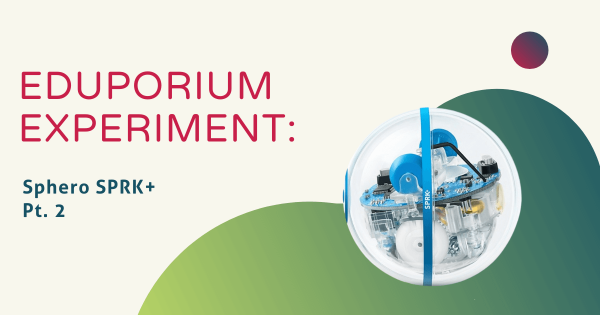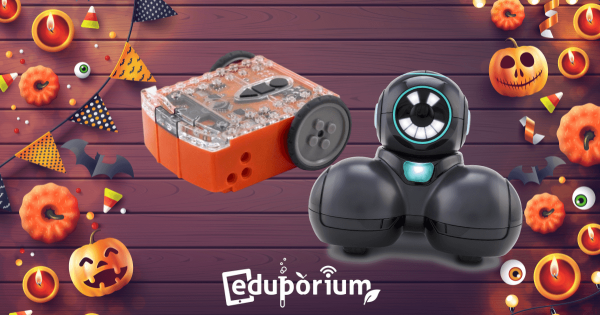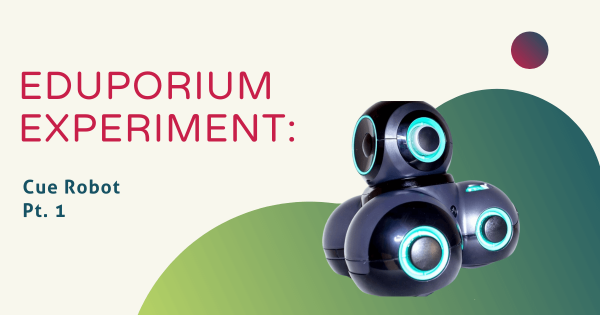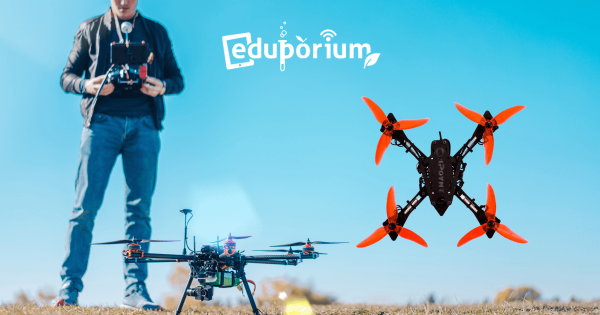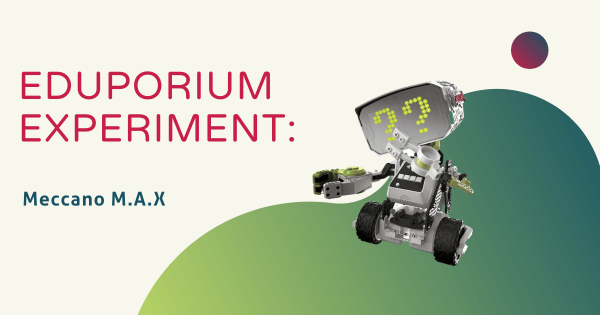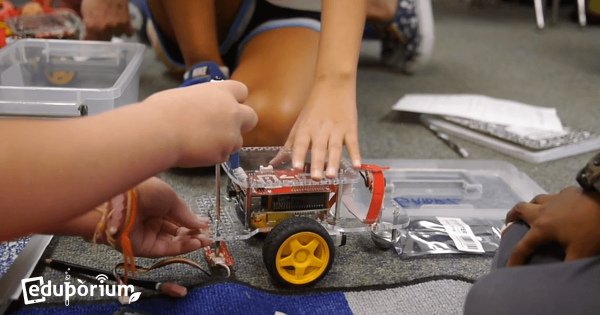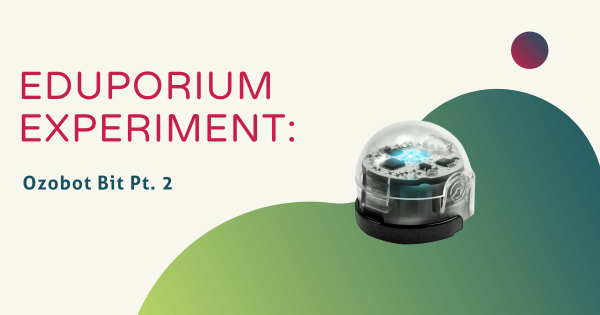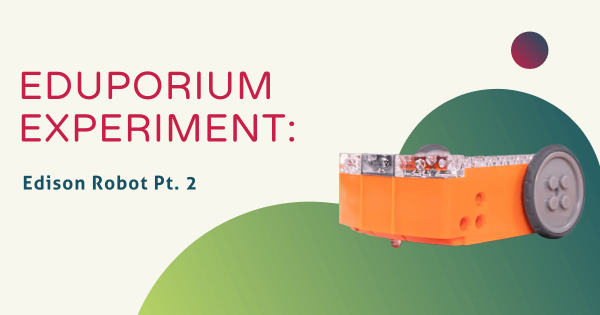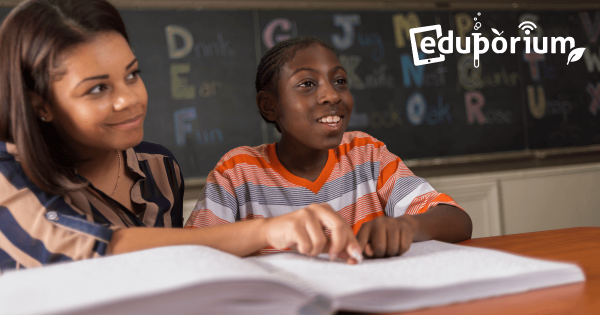The SPRK+ is one of Sphero’s latest additions to their seriously cool line of robots. Although only the size of a baseball, it is packed with educational power. When paired with the Sphero Edu app, the opportunities for learning are boundless. Kids have the option to write code in either a Blockly or path drawing environment.
Coding
Coding is, of course, a hugely important area of 21st century education. Whether they're as young as Pre-K or ready to enter college, coding is extremely relevant to almost every student's future. Thankfully, millions of educators and administrators realize the importance of teaching kids to code. Whether it's a curricular requirement or part of an informal school club, programming experiences are amazingly valuable for students. There's also plenty of options, so educators can find something without complicated or pricey features. In this section, you'll see a lot of different topics related to K-12 coding. These include features on particular STEM tools, insights on coding integration, skills students can develop and more. There's also something for teachers of all grade levels. Whether you teach the early grades or have students with the foundation to take the next step, you'll find helpful resources for teaching coding in the classroom.
Coding is truly an experience that all K-12 students can have. Starting in the early grades, students can code screen-free with a tool like the Cubetto Robot. Then, they can start to increase their coding skills and explore Blockly environments using tools like the Dash Robot, Ozobot Evo, and many others. From there, students can explore a bunch of different languages, like Snap!, Scratch, MakeCode, and more and, eventually, expand their skill sets by exploring text-based languages, like JavaScript and Python. All the while, the STEM solutions we advocate for also allow students to learn the most important coding concepts, like loops, variables, inputs, conditionals, and syntax. With a natural progression that leads to increased computer science competencies and enhanced future readiness, it's tough to understate the relevance of coding experiences in the classroom.
-
Some Halloween STEM—Plus The Edison And Cue Robots
Since it is Halloween and all, we got to thinking about how teachers could celebrate with technology. Sure, they could build something to scare their students, but that could take time and we’re all about helping teachers save time. We thought the next best thing would be adding some appropriately colored robots to the fold.
-
Eduporium Experiment | Cue Robot Pt. 1
There’s no shortage of interactive surprises with this cool new robot. Designed for children aged 11 and up, the Cue is ideal for introducing artificial intelligence and helping kids advance their coding skills. With this inviting robot and the Cue app from Wonder Workshop, students play games, chat, control, and program the Cue in Blockly or JavaScript.
-
Drones and Coding: STEM Education That's OnPoynt
The various educational drone kits from OnPoynt are designed to allow for class-wide collaboration and getting your students innovating, 3D printing, and flying both in and outside the classroom safely and effectively. Plus, OnPoynt’s line of innovative and highly customizable drones take learning to new heights—both literally and figuratively.
-
Eduporium Experiment | Meccano M.A.X
The Meccano M.A.X is not only programmed to respond to certain commands, but it can also learn from kids and build knowledge about their interactions with its incredible AI technology. Students even get exposure to engineering as they build M.A.X from scratch and then teach it new behaviors, skills, and tricks using voice commands.
-
Learning Programming With The GoPiGo—A Raspberry Pi Robot
The simple software, active engineering, and long-lasting learning kids crave and teachers approve of comes with the GoPiGo robot kits from Dexter Industries. Whether in the classroom, makerspace, or an afterschool robotics club, these are the kinds of products that promote innovative, hands-on learning. What’s to love about the GoPiGo robots?
-
Eduporium Experiment | Ozobot Bit Pt. 2
Although intended for kids aged 6-10, the original version of the Ozobot can help teach students of all ages thanks to its versatility and the range of different things children can do with it. Beginner students can start by experimenting with color coding using easy-to-understand OzoCodes and then build their way up to using OzoBlockly.
-
BTS Sale: Transform Today's Tinkerers into Future Inventors
STEAM education helps you facilitate active learning all around the school, makerspace, or library! But, the more important thing is that our Back to School sale is ending TOMORROW! There’s only one more day to get significantly reduced prices on six top EdTech tools. Click to learn more about what you can save on through then!
-
Eduporium Experiment | Edison Robot Pt. 2
Edison is the perfect teaching tool for STEM activities since it’s so incredibly versatile. A while ago—about a year now at this point—we were introduced to the Edison Robot and did a nice little write-up on it in what you now know as the Eduporium Experiment. Now, it’s revamped, however, and we’ve got some new stuff to cover, so here we go!
-
We Bet You Didn't Know These Ways of Teaching Coding
Whether it’s because of a lack of good resources, lack of funds, or lack of knowing how easy it is to get started, many school and district leaders do not provide their students with CS education opportunities. Luckily, coding is becoming easier to learn, which also means it’s become easier to teach. While they may seem unlikely, here are some ways of doing so.




